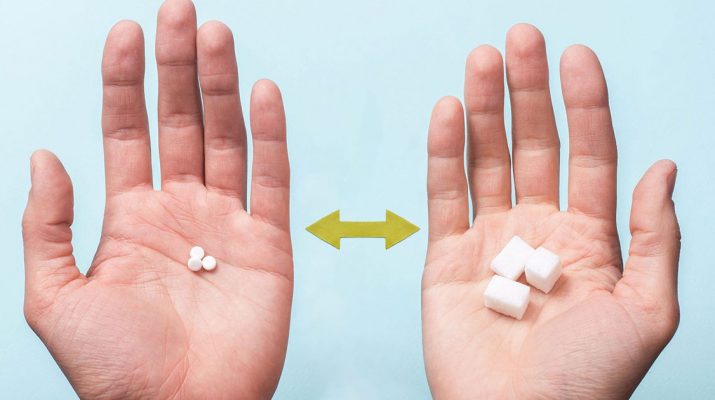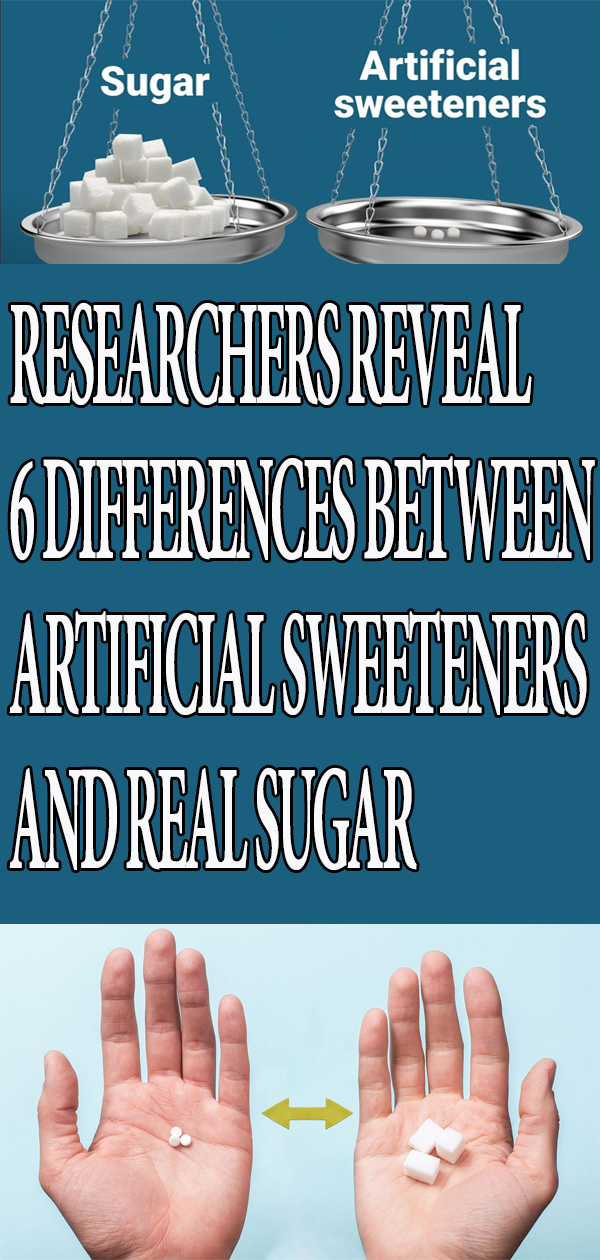The introduction of artificial sweeteners seemed to sweep through American society like an angel here to answer our prayers. Touted as the “no calorie” alternative to sugar, they became highly recommended by doctors as a healthy substitute in our diets for ourselves and our children.
With an increasing number of people becoming obese and developing heart disease or diabetes in our society, artificial sweeteners appeared to be the miracle to decrease the number of these conditions and possibly save lives.
Any questions about how they were made and any side effects on the body were swept under the rug as more doctors, dietitians, and nutritionists recommended them as a dietary change whose benefits far outweighed any possible negatives.
Increasingly over the years, there have been reports and rumors addressing potential consequences to our health due to artificial sweeteners. At the very least, they are proving to be less beneficial than originally thought. As our society is moving to more earth-friendly, natural, and organic foods, more questions have arisen about their safety. Additionally, more time has passed since their use became mainstream. This has allowed scientists to observe and study the effects over time.
Although real sugar and artificial sweeteners are both sweet and can be substituted for each other in a variety of ways, their differences show in what they are made of, how the body reacts to each, and the consequences of those reactions. Researchers reveal six differences between artificial sweeteners and real sugar.
What Are Artificial Sweeteners?
Artificial sweeteners fall under the category of sugar substitutions. According to Segen’s Medical Dictionary, artificial sweeteners are considered to be any group of substances with a taste similar to the usual dietary sugars, glucose, and sucrose that are metabolized incompletely or not at all, resulting in a minimal gain of calories.
Not all sugar substitutions are artificial sweeteners. Honey, corn syrup, stevia leaf (Truvia, Pure Via) or agave are considered natural sugar substitutes. Aspartame (Equal, Nutrasweet), neotame, saccharin, and sucralose (Splenda) are synthetic substances commonly recognized as artificial sweeteners.
Sugar, or sucrose, comes from sugar cane or sugar beets.
How Were Artificial Sweeteners Discovered?
Artificial sweeteners have had a rather haphazard method of discovery.
Saccharin
Saccharin was discovered in 1897 by a scientist who had been researching new uses for coal tar derivatives at John Hopkins University. Neglecting to wash his hands prior to lunch, he accidentally tasted something sweet on his hands. After sampling everything in the lab, he narrowed the source down to benzoic sulfimide.
Benzoic sulfimide is a coal tar derivative that turns out to be 300 times sweeter than sugar. It had been banned in 1912 but the ruling was reversed during WWII when sugar rationing made it necessary to find a substitute.
Cyclamate
This artificial sweetener is best known by the old pink packets of Sweet n Low. It was discovered in 1937 as a grad student of the University of Illinois was working on a fever reduction medication. Coincidentally, he also happened to taste something sweet on his fingers.
Cyclamate is approximately 30-50 times sweeter than sugar. It had its greatest boon in the 1950s when Tab and Diet Pepsi were the crazes. This is also when Sweet n Low went into production. By 1968, Americans were consuming 17 million pounds of it a year.
Later, it was discovered that cyclamate caused bladder cancer in rats, resulting in the FDA banning it immediately. At that point, Sweet n Low switched to using a saccharin-based product.
Aspartame
Aspartame didn’t make its debut until about a decade after cyclamate. It too was another unexpected, finger-licking discovery. While developing a new ulcer drug in 1965, James Schlatter, a research chemist, licked his fingers and tasted something sweet. He isolated it to be an amino compound of aspartic acid and phenylalanine. It is 200 times sweeter than sugar.
It failed to hit the market until 1981 due to suspicions of it causing brain tumors. Yet in the 1980s it replaced more than a billion pounds of sugar in the American diet.
Sucralose
Splenda, as it’s more commonly known, was another accidental discovery. Scientists were working on a way to molecularly bond sucrose molecules with chlorine. One of the scientists misheard a direction to test the substance. Instead, he tasted it. Luckily, it didn’t cause any harm and that led to the creation of sucralose.
Sucralose is slightly different than the other artificial sweeteners in that it is partially metabolized by the body and, therefore, has a few calories. The other benefit of it is that it can be cooked with.
Neotame
This is the newest sweetener, having hit the market in 2002. It is a derivative of aspartame. Neotame claims to be 7,000 to 13,000 times sweeter than sugar. It is quickly metabolized and fully eliminated by the body through our natural processes. This is the only one of the sweeteners discovered intentionally.
How Are Artificial Sweeteners Different Than Sugar?
Ingredients
This difference is in the contrast of the labeling: artificial sweeteners vs sugar. As described above, artificial sweeteners are synthesized ingredients which created a sweet taste. Sugar is gathered from the natural plants of sugar cane and sugar beet. Additionally, the artificial sweetener is hundreds to thousands of times sweeter in taste.
Evidence Is Showing Each Artificial Sweetener Affects Different Areas Of The Body.
Historically, we have researched artificial sweeteners as if they all act the same upon the body. In other words, to test the effects of artificial sweeteners on obesity, we ran studies on only one of the sweeteners and assumed the result would be the same for the others. In a video posted in The Atlantic magazine from Gastropod.com, scientists have discovered that may not be the case.
Studies have found that each sweetener lights up different areas of the brain. Additionally, as we have different sweet receptors in our body other than the taste buds on the tongue, each sweetener affects different receptors throughout the body.
Sugar Vs Artificial Sweetener Affects Weight Differently
In the same video, Rick Mattes, a scientist from Purdue University, and his colleagues spoke of a small study they performed. They gave a group of people drinks sweetened with sugar; other control groups consumed drinks sweetened with aspartame, saccharin, stevia, and sucralose, respectively.
The findings were unexpected. The group who drank sugar-sweetened drinks gained weight, as was expected. Interestingly, so did those who were drinking saccharin-supplemented drinks. Saccharin is reported to have no calories. Those who drank the Splenda drinks lost the most weight while those who used aspartame or stevia remained the same.
Some Artificial Sweeteners Change Your Gut Microbiota
In another study, at the Weizmann Institute in Israel, Eran Elinav was researching how blood sugar is affected by artificial sweeteners. Their initial studies showed some people appeared to get a sugar spike after consuming diet soda. This warranted further study using rats.
They found that the number of gut microbia for the rats changed after consuming certain artificial sweeteners. The type of microbes affected seemed to be determined by whether or not they consumed more calories from the food on its way through the body.
Artificial Sweeteners Overstimulate Our Sweet Receptors
Our sweet receptors have adapted to the sweetness of sugar without necessarily altering our ability to taste sweet products. Artificial sweeteners are several times sweeter than sugar to our receptors. This then alters the level of sweetness our receptors expect to receive. Therefore, if you become accustomed to artificial sweeteners, then other foods sweetened with just sugar, or even fruits, won’t taste as sweet.
Possibly More Addictive
In one study, rats were given cocaine and then later given the choice between cocaine and saccharine. The rats chose saccharine.
Other studies have shown similarities between sugar and artificial sweeteners. Ironically, the very diseases that artificial sweeteners were intended to help guard against are now substances added to the list of contributors.
A European study of artificial sweeteners vs sugar as contributors toward Type II diabetes demonstrated that either group was at risk if a person drank just one sweetened soda a day. It made no difference as to whether the sweetener was artificial sweetener or real sugar.
Another study has demonstrated that women over the age of 50 were significantly at risk for coronary heart disease if they consumed more than two artificially sweetened drinks a day or more than two drinks with sugar.
Artificial sweeteners have been added to several products that we don’t even think of as containing sugar: canned foods, dairy products, powdered drink mixes, and soups. Any product that claims it has “no added sugar” or is “lite” probably has artificial sugar added. A consumer would need to educate themselves on all the different names artificial sweeteners can be labeled in order to identify which products contain them.
Final Thoughts
While artificial sweeteners have a reputation for causing cancer, currently, there isn’t any concrete evidence to that claim. The one sweetener that was proven to cause cancer, cyclamate, was removed from the shelves and is no longer sold. There was a fear regarding aspartame back in the 1970s, but it was shown to be erroneous. Current artificial sweeteners on the market have been FDA approved after various tests and they strongly stand by their conclusion.
There are many studies being done on artificial sweeteners and the results have yet to reach a definitive conclusion. Tentatively, researchers have discovered six differences between sugar and artificial sweeteners. One fact remains true for both sugar and artificial sweeteners: Both should only be used in moderation.


